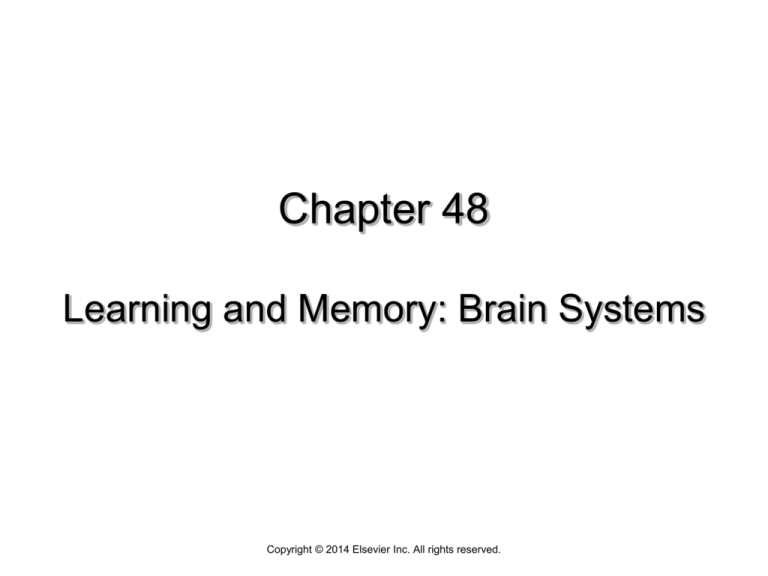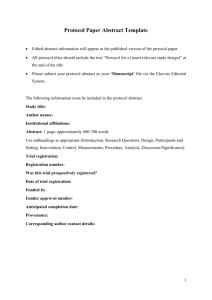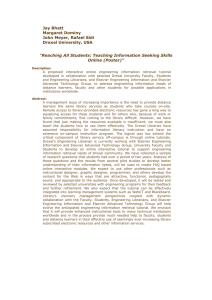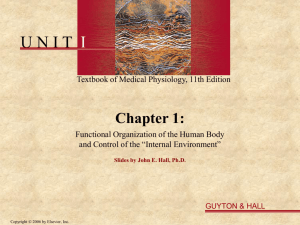
Chapter 48
Learning and Memory: Brain Systems
Copyright © 2014 Elsevier Inc. All rights reserved.
FIGURE 48.1 Drawing of the human brain showing components of the major memory systems.
Copyright © 2014 Elsevier Inc. All rights reserved.
FIGURE 48.2 The anatomy of the hippocampal memory system in monkeys and rats. The hippocampal memory
system includes the hippocampus (CA fields, dentate gyrus, and subiculum) and the parahippocampal region,
which includes the entorhinal cortex, the perirhinal cortex, and the parahippocampal cortex. The hippocampal
memory system also includes midline diencephalic nuclei. Multiple association areas in the cerebral cortex send
outputs that converge on cortical areas in the parahippocampal region, which in turn sends its outputs to the
hippocampus. The output path involves return projections from the hippocampus to the surrounding
parahippocampal region, which in turn projects back to the same cortical association areas. The bottom image
shows detailed entorhinal projections on a transverse section of the hippocampus (location of section indicated
by dashed lines on the top image). Top image from Eichenbaum (2001).
Copyright © 2014 Elsevier Inc. All rights reserved.
FIGURE 48.3 Magnetic resonance images showing the brains of amnesic patients H.M. and E.P. The images
show axial sections through the medial temporal lobes and reveal damaged tissue as a bright signal. H.M.’s
damage resulted from surgery, and E.P.’s damage was caused by viral encephalitis. Nevertheless, the resulting
lesion was similar for the two patients. Both patients sustained extensive damage to the medial temporal lobes
and are profoundly amnesic (from Stefanacci, Buffalo, Schmolck, & Squire, 2000).
Copyright © 2014 Elsevier Inc. All rights reserved.
FIGURE 48.4 Recognitionmemory tasks used for studies of memory in nonhuman primates. Both tasks are
easily adapted for human participants as well. (A) The delayed non matching-to-sample task using unique
objects as stimuli. The subject is initially presented with a single novel object as the sample and must displace
the object. This is followed by a variable delay during which the subject cannot see any objects. In the
subsequent recognition test, two objects are presented, one of which is the same as the sample and the other of
which is novel. Correct performance requires the subject to recognize and avoid the sample object and instead
choose the novel one to receive a food reward. (B) Visual paired comparison task. During the sample phase the
monkey looks at two identical pictures. In the test phase, one of the sample pictures is represented along with a
novel picture. Memory for the repeated picture is inferred by measuring the subject’s tendency to look away from
the repeated picture and towards the new picture.
Copyright © 2014 Elsevier Inc. All rights reserved.
FIGURE 48.5 The Morris water maze task. Early in training, rats search for the submerged platform for extended
periods. After training the rat swims directly to the platform.
Copyright © 2014 Elsevier Inc. All rights reserved.
FIGURE 48.6 Associative transitivity and symmetry in paired associate learning. (A) On each training trial, one of
two odors is presented as the sample. On the subsequent choice trial the animal must select the assigned
associate, indicated by a “+”. (B) Outline of odor pairings used in training on two sequential sets of paired
associates, plus stimuli used in tests for transitivity (C for A; Z for X) and symmetry (B for C; Y for Z). From
Bunsey and Eichenbaum (1996).
Copyright © 2014 Elsevier Inc. All rights reserved.
FIGURE 48.7 Recognition memory signals in the monkey hippocampus. (A) As monkeys performed a variant of
the Visual Paired Comparison task, some hippocampal neurons showed a change in firing rate that reflected
stimulus novelty. This neuron fired more when the pictures were novel (Left panel) compared to when they were
repeated (Right panel). (B) Many neurons showed a greater modulation in firing rate by novelty for pictures that
were better remembered (Left panel) compared to those that were not well remembered (Right panel). From
Jutras and Buffalo (2010).
Copyright © 2014 Elsevier Inc. All rights reserved.
FIGURE 48.8 An example of a place cell (A) and a grid cell (B) recorded froma rat hippocampal and entorhinal
neuron, respectively. The gray lines show the path of a rat as it explored a square recording chamber, and the
red dots show the locations along that path at which an example hippocampal (A) or entorhinal (B) neuron fired
action potentials. The right panel (C) illustrates activity from multiple grid cells, and one idea is that place fields
might relate to points of overlap from a collection of grid fields. From Derdikman and Moser (2010).
Copyright © 2014 Elsevier Inc. All rights reserved.
FIGURE 48.9 Gamma-band synchronization in the medial temporal lobe during memory encoding is associated
with the degree of subsequent recognition. (A) Gamma-band phase synchronization (coherence) between the
human hippocampus and the rhinal cortex during word study, as a function of time from stimulus onset.
Coherence was significantly higher during the encoding of words that are subsequently recalled (black) than for
words that were not later recalled (gray). Error bars indicate SEM. Adapted by permission from Macmillan
Publishers Ltd. from Fell et al., 2001. (B) Gamma-band spike-field coherence in themonkey hippocampus during
the encoding of pictures, as a function of time from stimulus onset. Coherence was significantly higher for stimuli
to which monkeys subsequently showed a high degree of recognition (red) than for stimuli which were not well
recognized (blue). Red and blue shaded areas represent SEM. Gray shaded area represents time points at
which gamma-band coherence was significantly different for the two conditions (p < 0.01). Modified from Jutras
et al. (2009).
Copyright © 2014 Elsevier Inc. All rights reserved.
FIGURE 48.10 Anatomy of the striatum and the rest of the basal ganglia. STN, subthalamic nucleus; GPe,
external globus pallidus; GPi, internal globus pallidus; SNr, substantia nigra pars reticulata; SNc, substantia nigra
pars compacta; VTA, ventral tegmental area. From Yin and Knowlton (2006).
Copyright © 2014 Elsevier Inc. All rights reserved.
FIGURE 48.11 “Place” versus “response” learning. The rat is trained initially to turn left in order to obtain a
reward at a particular location. In a subsequent test, the maze is rotated and the rat is allowed to select whether
it will perform the same left turning “response” or remember the “place” of the previous reward.
Copyright © 2014 Elsevier Inc. All rights reserved.
FIGURE 48.12 Weather prediction task. View of the computer screen presented to subjects showing all four
stimulus cards and the “sun” or “rain” response choices. From Knowlton et al. (1996).
Copyright © 2014 Elsevier Inc. All rights reserved.
FIGURE 48.13 A schematic diagram of principal pathways involved in classical conditioning of the eyeblink
reflex. The role of structures at points a–e has been studied using reversible inactivation with a local anesthetic.
Inactivation at point “c” (shaded areas) prevents learning, whereas inactivation at “a,” “b,” “d,” or “e” prevents the
behavioral response during inactivation, but does not block learning. From Thompson and Kim (1996).
Copyright © 2014 Elsevier Inc. All rights reserved.
FIGURE 48.14 Fear conditioning. (A) Prior to training, the tone produces a transient orienting response. During
training the tone is followed by a brief foot shock. Following training, the rat is reintroduced into the chamber and
freezes when the tone is presented. (B) Anatomical pathways that mediate fear conditioning. A hierarchy of
sensory inputs converges on the lateral amygdala nucleus, which projects to other amygdala nuclei and then to
the central nucleus, which send outputs to several effector systems for emotional responses. BNST, bed nucleus
of the stria terminalis; DMV, dorsal nucleus of the vagus; NA, nucleus ambiguus; RPC, nucleus reticularis pontis
oralis; RVL, rostral ventral nucleus of the medulla. From LeDoux (1995).
Copyright © 2014 Elsevier Inc. All rights reserved.
FIGURE 48.15 A schematic representation of how hormonal systems and the amygdala complex can modulate
the storage of memory for emotionally arousing events through influences on other brain systems. See text for
details. From McGaugh, Introini-Collison, Cahill, Kim, and Liang (1992).
Copyright © 2014 Elsevier Inc. All rights reserved.





